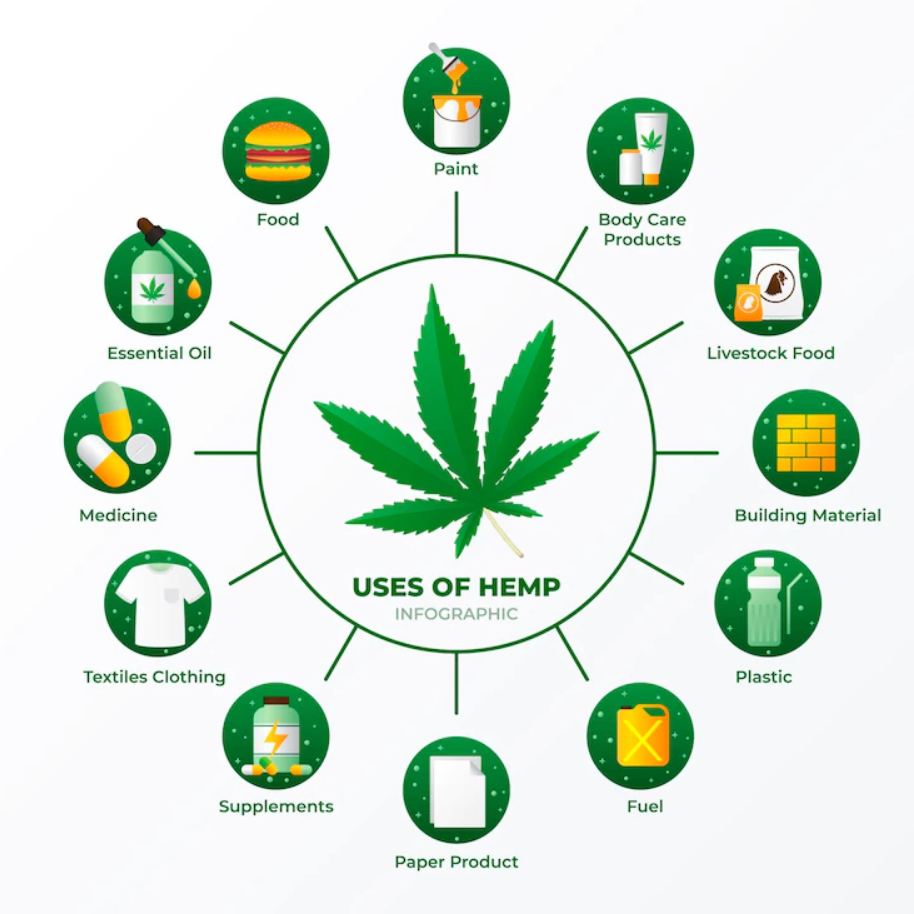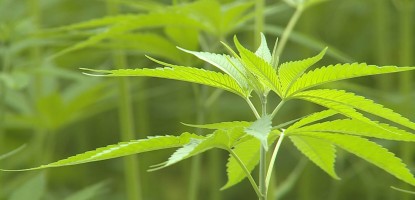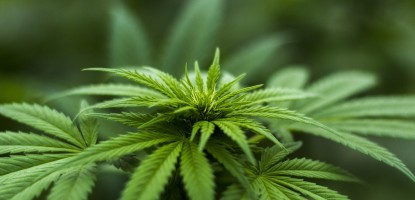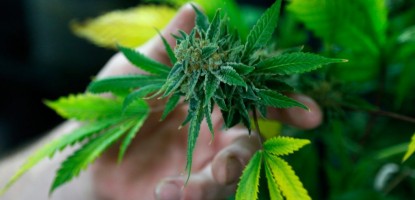Hemp - A Miracle Crop

Some people consider hemp a contentious herb, but this isn't the case.
Hemp is a type of Cannabis sativa primarily bred for its fiber rather than its psychotropic properties. Many hemp cultivars contain none of the psychoactive properties attributed to marijuana. For hundreds of years, this variety of hemp plants has been regarded as a fiber supply, oil resource, and a vital source of nourishment.
Hemp seeds are the central portion of the plant in terms of nutrients. The seeds can be consumed whole or unhulled.
Besides being nutritious, the hemp plant is also environmentally friendly. It requires less water than cotton plants and has more yield in less space.
In this article, we will talk about this miraculous plant and its benefits.
Almost everyone has heard of industrial hemp, but few people actually know anything about it, and we must start talking about its multitude of benefits. We can open up countless doors by reducing the cost to grow it and educating people on its many services.
Believe it or not, industrial hemp is a super crop, and it’s making an impact on people and nature. This amazing plant can improve farmers’ well-being and make a huge difference in climate impact. For thousands of years, farmers have planted hemp to make their soil more fertile. Industrial Hemp helps attract beneficial insects, enhance air quality, and manage water erosion.
Hemp is a plant that is used for industrial purposes and can be grown in almost any area of the world. Industrial hemp is a variety of Cannabis sativa that has been bred specifically to produce the maximum amount of fiber and contain the minimum possible concentration of THC Tetrahydrocannabinol (THC), which is the molecule that causes the psychoactive effects of cannabis products. Hemp grows in a wide variety of soils, requiring minimal care, and reaches maturity in approximately 3–4 months.
Hemp is a versatile and eco-friendly plant that has been used for centuries. As agriculturally beneficial as it is, this plant has been repressed due to its affiliation with marijuana.
Hemp is not marijuana - it’s an entirely different species of the Cannabis sativa genus. Hemp contains less than 0.3% tetrahydrocannabinol (THC), the psychoactive ingredient in marijuana. This level of THC makes industrial hemp legal to grow in many places.
In contrast, marijuana can contain up to 30% THC, which causes a high when consumed by humans. Industrial hemp does not get you high—you won’t even feel any effect if you smoke or eat it.

Today hemp is grown primarily for industrial purposes such as paper production and biodegradable plastics manufacturing. The plant also produces biofuels like ethanol and biodiesel from seeds or stalks of mature plants.
Industrial Hemp is an adaptable crop
Hemp was first used more than 10,000 years ago.
Our company is confident that we will be able to use this legalization to assist these farmers who have left their homes and families in search of better opportunities. We work to enhance the financial and social conditions of these farmers who have abandoned their homes and families to seek better opportunities. In addition to providing them with training, we also want to create a network that will allow both farmers and artisans to connect. As a result, groups of farmers will be able to share ideas, showcase their work, and find buyers for their products.
Hemp fiber has been used for making clothing, paper, and building materials; it was cultivated by many cultures around the world until it was banned in 1937 because of its close association with cannabis leaves that contain THC.
In addition, hemp seeds can be used to substitute other oils in cooking. The hemp seed oil has been shown to contain high omega-3 fatty acids. It’s also high in vitamin E, magnesium, and zinc, a few of the many nutrients found in this “superfood.”
Hemp is typically used to make paper but is also good for clothing making and even construction materials, and it is extremely eco-friendly. hemp is often used for furniture. its seeds are currently being studied as a potential food protein source.
Hemp is extremely eco-friendly
Industrial Hemp is a renewable resource, meaning it can be grown repeatedly without harming the environment. The fiber of industrial hemp plants can be used to make clothing, paper, biodegradable plastic, and even fuel!
- It is beneficial for the soil.
- It has been shown to reduce soil erosion.
- It helps to restore nitrogen levels in the soil.
- Hemp can clean up contaminated soil.
- It has a variety of uses, which makes it a good crop choice.
All of its uses make industrial hemp a versatile crop that is easy to cultivate and has many applications in many industries.
Industrial Hemp, which can be used to produce food, clothing, paper, and fuel, is one of the most versatile crops in agriculture today. Its seeds contain a high portion of protein and oil that resists rancidity when stored for long periods at ambient temperatures.
Hemp's Environmental Advantages
The possibilities are endless, hopefully, you now have a better understanding of the numerous benefits of hemp. It’s more than just a “drug”—it’s a unique and versatile crop that could be instrumental in addressing some of our planet’s most pressing problems.
Hemp is essentially the cleaner the environment. The plant absorbs co2 from the air, allowing us to breathe cleaner air more efficiently. In addition, every tonne of hemp grown removes 1.63 tonnes of co2 from the air, providing hemp a far more efficient carbon accumulator than woods.
Hemp also produces a high harvest in a short time, taking only 4 months to mature. It not only makes it simple for ecological farmers to incorporate hemp into their seasonal average, but it also serves to rebuild the land due to the minerals found in hemp.
Our planet faces serious threats from deforestation and climate change. Now hemp is becoming more recognized for its potential as a sustainable alternative crop to many of the crops we currently use. As hemp gains more popularity, we can hope that future farmers and gardeners will use hemp as a staple crop as we begin to imagine a future without deforestation. Since hemp roots can extend up to 9 feet below the surface, its inclusion will constantly enrich the land in which it thrives, even assisting in rehabilitating degraded land and producing a range of plants as a consequence!
Hemp's Medical and Cosmetic Applications
Hemp isn't just healthy for the environment; it's also beneficial for you! It's an excellent supply of protein and high in omega 3 and 6 fatty acids present in fish. Since it is free from gluten, it can be an acceptable option for vegans and animal nutrition.
Besides essential nutrients, you can get the advantages of hemp in various ways. This is particularly true if you want to re-energize, de-stress, or get relief from discomforts.
CBD oil is among the most adaptable products derived from the hemp plant. Indeed, CBD may be taken orally in various ways, and it has been shown to help with anything from anxiety to menstrual pain.
However, it has many other applications that might help you improve your overall health. The omega proportion is helpful to heart health and can also be advantageous to your body's biggest organ, the skin. CBD has a vast spectrum of skincare advantages because it works with your body differently when used externally, like acne alleviation, haircare, fine line and wrinkle reduction, and even calming rough regions of eczema and psoriasis.
Hemp - A Versatile Plant
Hemp is a multipurpose plant in that you may utilize its many parts, from the stalk to the bud, rope to cloths. Hemp's success as a fabric for clothing, string, and everything in between is due to its eco-friendly materials yet again. Because it was initially found, it has rapidly been determined to have various benefits because it grows swiftly, cleanly, and with a greater return.
In reality, proof of hemp in use as primary fabric for the marine fabrication of line and sailing can be dated back to 8000 BC.
The hemp plant has made its place in houses worldwide for all of the reasons listed above. However, in recent times, brilliant brains in the design business have started to take it so seriously by physically building new homes out of it! Hempcrete, a combination of the center of hemp stems and lime for cementing, has brought hemp's resilience in-house, with dwellings bundled with hempcrete releasing significantly less co 2 into the environment than homes sealed with regular concrete.
Even though the technology isn't that far off – hempcrete isn't robust enough to be used in load-bearing structures, for example – the case that individuals continuously discover new uses for hemp is further proof that it is the plant that can rescue the world.
The Takeaway?
The whole hemp plant may be used for a range of industrial and medical uses, and it's the solution to long-term environmental, financial, and cultural sustainability. It now replaces and exceeds lost revenue from previous cash products such as tobacco and has benefited American agriculture in general.
Hemp might be the miracle crop that can lay the groundwork for an environmentally friendly and viable destiny in the twenty-first century, thanks to continuing research and understanding sponsored by politicians around the country.






1 Comment(s)
This is so a fantastic article. Thanks for sharing this informative blog. I have become a fan of your blogs, and this blog is so exciting and informative.
Leave a Comment